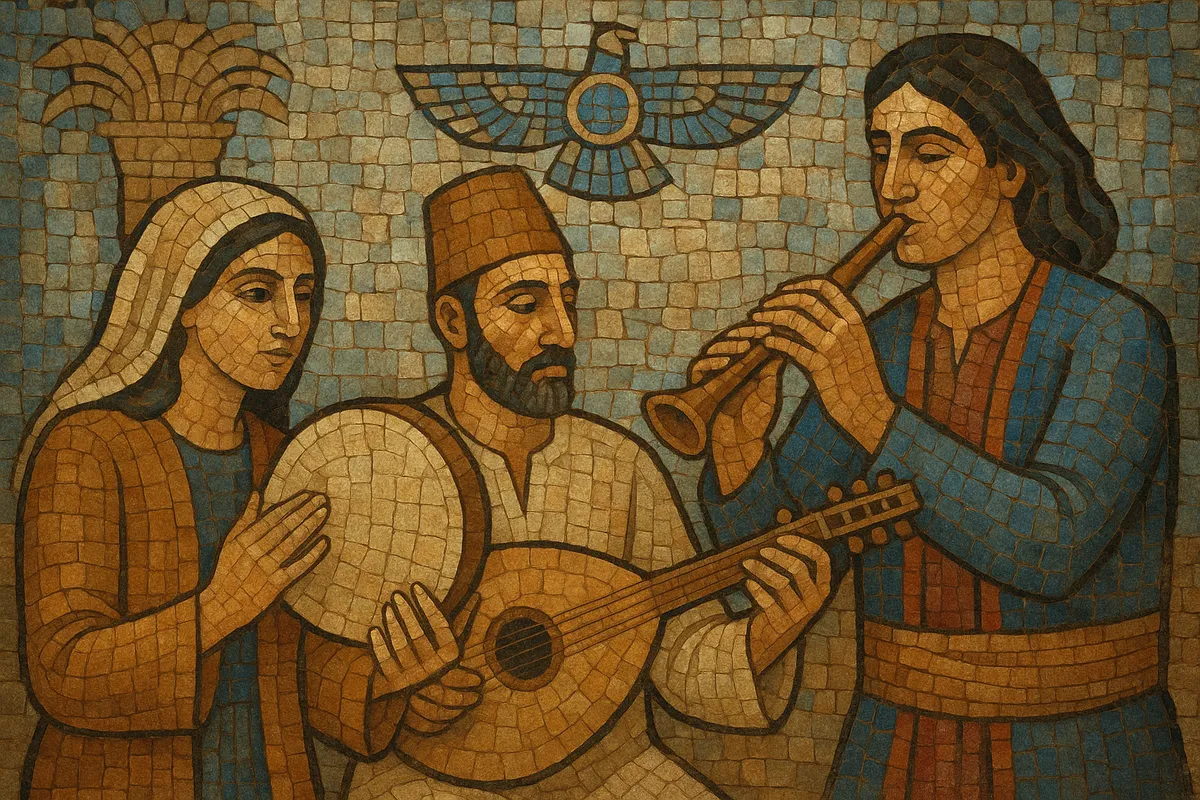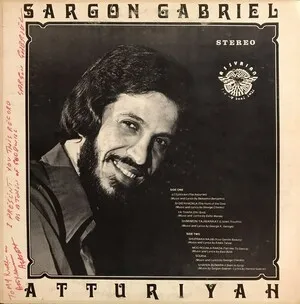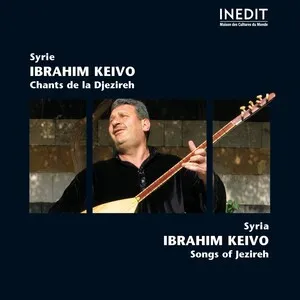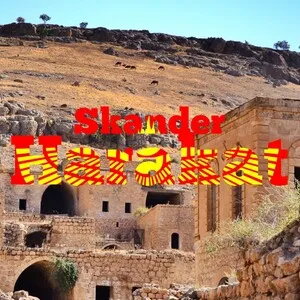Assyrian folk music is the traditional music of the Assyrian (Syriac) people of northern Mesopotamia, today spanning northern Iraq, southeastern Turkey, northeastern Syria, and northwestern Iran. While its roots stretch back to ancient Mesopotamian and Syriac traditions, the style known today coalesced in the 20th century through urban ensembles, village dance repertoires, and later diaspora recordings.
Melodically it draws on maqam-derived modes such as Hijaz, Bayat, Kurd, and Ajam, often featuring microtonal inflections and ornamented vocal lines. Rhythmically it is closely tied to line and circle dances—most famously khigga (often in steady 4/4) and sheikhani (typically in 6/8)—as well as other wedding and festive forms. Core instruments include zurna and dawola (davul) for outdoor dance, and oud, qanun, violin, saz/tanbur, and frame or goblet drums (riq, darbuka) for indoor and stage settings; in the diaspora, keyboards and drum machines frequently support the dance grooves.
Thematically, songs move between exuberant wedding pieces and nostalgic, often bittersweet lyrics about homeland, love, exile, faith, and communal memory. Modern performers balance authenticity and accessibility by combining traditional modes and dance rhythms with contemporary arrangements.
Assyrian folk music emerges from the broader cultural sphere of northern Mesopotamia, where ancient Near Eastern musical practices, Syriac liturgical chant, and village song traditions coexisted. For centuries, music was embedded in communal life—weddings, harvests, and religious festivals—performed by singers and small ensembles using reeds, lutes, and drums.
In the early to mid‑1900s, as Assyrians migrated to urban centers in Iraq and Syria, village repertoires and dance rhythms—especially khigga and sheikhani—were adapted for salons and stages. Recording technologies and radio fostered a recognizable Assyrian repertoire and star singers. Regional exchange with Arabic, Kurdish, Turkish, and Persian musical worlds reinforced the use of maqam-derived modes and popular rhythmic cycles.
Following displacement and emigration throughout the 20th century, a large diaspora in the Americas, Europe, and Australia preserved and popularized the style. Electric instruments, keyboards, and drum machines entered the sound, yet the core identity remained rooted in modal melodies and communal dance. Celebrated singers recorded wedding classics and nostalgic ballads, strengthening a transnational audience.
Today, Assyrian folk music thrives at community events, festivals, and on digital platforms. Artists continue to refresh the tradition by fusing classic instruments (oud, qanun, violin) with modern production, while maintaining characteristic modes and dance forms. The music serves as a living archive of Assyrian memory, faith, and cultural continuity.







%2C%20Cover%20art.webp)
